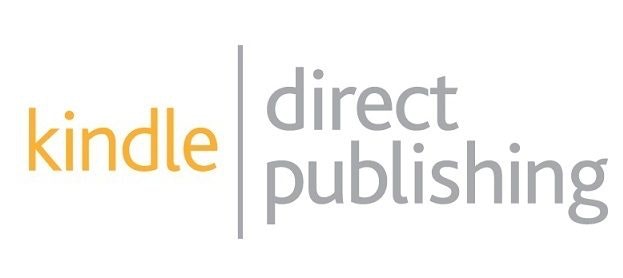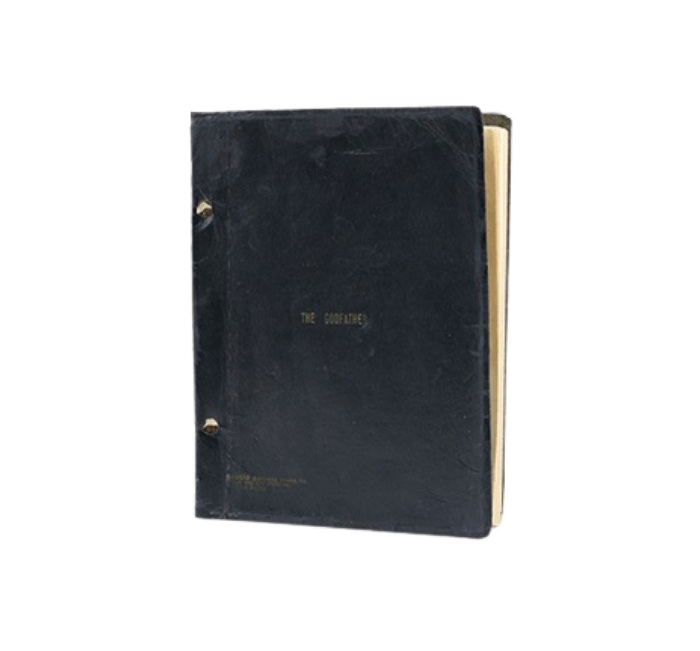You don’t need to get a book deal. You don’t even need to be an author.
This week’s issue explores the world of something much more established, yet not discussed nearly as often as you’d expect: Amazon KDP.
Let’s dive in!

Table of Contents
What is Amazon KDP?
Amazon KDP stands for Kindle Direct Publishing. It’s one of Amazon’s publishing units; the smaller and less well-known sibling to Amazon Publishing.
While Amazon Publishing, or “APub,” is Amazon’s conglomerate of in-house publishing brands, KDP makes it easy for anyone to self-publish ebooks, audiobooks, and now paperbacks.
The “Kindle” part of the name is outdated. Although it’s been around since the release of the Kindle in 2007, KDP later expanded to audiobooks, dovetailing on Amazon’s acquisition of Audible.com, and kicked into high gear in 2016 when Amazon added the paperback publishing option.
Over the past decade and a half, self-publishing has morphed from the “option of last resort,” to the primary way up-and-coming authors get their work in front of an audience. And that audience is massive. Amazon Prime has150 million users, and over 6 million households in the US alone use Prime Reading. In 2019, Amazon paid out $300 million in author royalties.
An interview with a KDP expert: Stephen D.
This week, I had the pleasure of sitting down with Alternative Assets subscriber and Amazon KDP expert Stephen D.

Stephen is an experienced Amazon KDP publisher, seller, and consultant. I was first introduced to Stephen while he was selling his KDP business on Flippa. A potential buyer hired me and my team to perform due diligence on the business, since he had no prior experience in this area, and didn’t know where to begin. Diving into Stephen’s business opened my eyes to a digital asset type I didn’t know much about, and have been interested in ever since.
In our 30-minute chat, we discussed:
- Why & how he got into KDP
- The advantages of starting a KDP business
- How he decides what to write about
- Competition and ranking in Amazon’s algorithm
- Why publishers use pen names
- Outsourcing content with ghostwriters
- Profitability of sub-asset types
- Predictions about the future
- Advice for first-timers
You pay someone to write a document of 10,000 words, and with that one document you can get four streams of income. You can get income from creating an ebook. You can get income from putting it into the Kindle library. You can get money from selling it as an audiobook. And you can get money from selling it as a paperback. So, from that one piece of content, you’re getting four separate incomes, which is pretty cool. I don’t really know of any other any other businesses in the world where you can get four streams of income from one piece of content.
-Stephen D.
You can read the abridged interview or listen to the full 30-minute interview here.
How to get started with Amazon KDP
Getting started with KDP takes even less effort than spinning up a niche content site or an ecommerce store. (And that’s saying something.)
Think about it: you don’t need hosting or a CMS. You don’t need any plugins or design templates. You don’t even need a domain! All you really need is a KDP account, content, and some cover art. Upload, hit publish, and your book appears on Kindle stores worldwide within 24-48 hours. Boom. ?

But to do it right, there’s a bit more to it. The basic steps are as follows:
Find a niche
Just like with websites, apps, and other digital assets, it all comes down to your niche. You wouldn’t start a content site without doing keyword research, and you might not want to write an ebook before doing topic research.
If you know a topic well and want to write about it regardless of the landscape, go for it! But it’s wise to spend some time to find a topic that’s clearly in demand, and under-supplied in the Amazon marketplace.
In a recent podcast, the Cash Flow Pirate talks about a guy named Ty Cowen (no, not that Tyler Cowen) who looks for highly rated courses on Udemy & Gumroad, then searches for that same course title on Amazon. If he finds an ebook in that niche with a Best Seller Ranking (BSR) of under 20,000, he knows the niche has some legs.
I’d extend this strategy a step further. Use a tool like SEOCockpit or AlsoAsked to see what people are searching for on Google, and scrub that against Amazon search results to uncover the best opportunities.
Hire a ghostwriter
“…But I’m not an author!”
You don’t need to be an author. There are thousands of writers on Upwork or Scripted that specialize in ebooks. Find a quality, trustworthy writer, and hire them to write for you.
Get creative. Stephen D. pays per project, targeting college students who have written about a specific creative topic, and offers them cash to purchase the rights to their content. Aim to buy a 10,000 word document for between $200 – $600.
Consider expanding your content into other languages. While it’s a bit daunting and more expensive, if you’re publishing say, a low-content children’s book, translating won’t be all that tough, and will immediately open you up to new markets.
Create artwork
You can in fact judge a book by its cover, and millions of people do exactly that. How the book looks up on the digital shelf matters quite a lot.
If you’re an artist or designer, great! If not, spend $50 – $150 to get cover art that looks like it cost three times as much. Don’t skimp here.
Find a narrator
Once you have your ebook, there’s little reason not to turn it into an audiobook.
The ACX, or Audiobook Creation Exchange is a narration marketplace owned by Amazon (shocking, I know) which connects authors, agents and publishers with narrators, sound engineers and recording studios. Tight integration with KDP means it’s super easy to hire a narrator for around $100 – $200/hour.
The average narrator will cover about 100 words per minute, so a typical 10,000 word document will take 1.7 hours to narrate, and cost $250. If you use ACX for your audiobook narration, there’s also an option to waive the upfront payment, and instead do a 50/50 royalty split with ACX when your audiobook sells.
You could also find a professional voice actor through voices.com. And if you really want to save money, you can self-narrate. (Just make sure other people like the sound of your voice as much as you do.)
Pros of publishing with KDP
Low upfront costs
Assume you’re publishing 10,000 words. Given the estimates above, you can expect to get an ebook published for between $250 – $750. Adding in an audiobook will set you back an additional $250. So all in, you’re looking at around $500 – $1,000 in total.
But that’s it! There are no other upfront publishing or setup costs. The tools are easy to use, you own the content, and you own the copyright. You set your own prices, sit back, and wait for the passive income to come in. Whether it’s 10 sales on your first day, or just 1 sale a month for the next 10 years, it’s yours forever.
Royalties
With most titles, you get a 50-70% royalty on each sale. However, it’s not quite that simple. Amazon’s pricing model is chock full of exceptions and incentive programs — including the KDP Select Global Fund, which pays authors based on the number of pages viewed (currently $4.32 per 1,000 pages viewed).
Calculating your royalties is shockingly arduous, and way beyond the scope of this article. Here’s a guide if you’re interested.
Freshness of content
One compelling aspect to KDP (and publishing in general) is that your content doesn’t need to be as fresh to be relevant. Unlike with content websites, where you not only have to consistently publish new posts, you have to keep old ones updated, ebooks don’t have to be updated as frequently — at least not to the same degree. Amazon’s algorithm seems to favor reviews & search keywords much more highly than freshness or publication date. (That said, since you have full control over your content, you can make changes to your books at any time.)
Paperback opportunity
The opportunity to turn it into an actual, physical paperback is even more compelling. Again, there are no upfront costs. Similar to Merch by Amazon, you just upload the book to Amazon. When a sale is made, they print on demand & ship it to the customer.
Just keep in mind paperbacks are typically much longer than ebooks. 10,000 words won’t cut it, and will feel really thin. If you want good reviews, a paperback should be 60,000 – 100,000 words long (or 6 – 10 hours of audiobook time).
Repurposing ineffective content
When considering potential content for a book, don’t limit yourself by thinking it has to be brand new. Instead, consider repurposing old content that isn’t doing anything for you.
For example: earlier this year I produced a massive, 45,000 word article which I cannot get to rank in Google. I spent hundreds of dollars producing this with a friend of mine, and probably 2 full days of my time. I keep it updated weekly, I’ve secured half a dozen quality backlinks, and I still can’t get on page 2 for most queries, let alone page 1.

I just checked, and this content which probably cost me over $300 to produce, has earned a whopping total of $2.53. (Yippee!) ? It’s maddening as hell, and I’m about to fold my hand on this.
But now I’m thinking, what if I just turned this into a book instead? I mean, why not? If you have existing content that isn’t ranking on Google, well…Amazon’s algorithm is completely different!
In fact, since Google often ranks pages on the Amazon.com domain especially high (given their reputation as a trusted domain) you may be able to siphon even more traffic from Google than you originally could have before.
And given the domain strength and frequency of indexing, when existing web content gets repurposed for Amazon, the feedback loop for Amazon search optimization is probably faster than it is for traditional SEO.
Problems with KDP
Okay, this is all great. But let’s not pretend this digital asset class doesn’t have its problems.
Ebook profits are low
While audiobooks and paperbacks are more profitable, of all the book types, ebooks are both priced the lowest, and pay out the least. Most are priced between $0.99 and $2.99, and unlike other types, pay out royalties of just 35%. Many people claim ebook profitability is becoming impossible, and at best the glory days are over.
You’re at the mercy of Amazon’s algorithm
Sure, Amazon keyword optimization isn’t as complex as Google’s, but ultimately you’re just trading one algorithm for another. And there are less SEO tricks available to give you an edge.
It’s tough to market your business
Just like with FBA, Amazon is extremely transactional. They aren’t big on giving sellers their own identity, and routinely ban sellers who break their rules. Yes, you can siphon email addresses from buyers and promote your other works throughout the book. But your ability to market is limited, and Amazon is not a company you want to test your luck with.
Massive competition
KDP has low barriers to entry, but that works both ways. Because it’s so damn easy to publish to the marketplace, expect that once you’ve found a profitable niche, it won’t take long for others to find out. This is why privacy and niche protection is through the roof, and authors publish across dozens of pen names.
If you’re using one pen name for all your books, and you have two or three really good sellers, someone who clicks on your pen name is essentially going to find out what books of yours are selling and which ones are not!
-Stephen D.

Buying a KDP business
How to value it
Valuing a KDP business is similar to valuing a website. Standard rules around longevity, cash flow, and revenue multiples apply. Because of the high competition, valuations are closer to newish Amazon FBA stores than long-standing content sites.
Unlike with websites, where buyers are slooowly starting to value other site attributes on their own merits (traffic, email list, social accounts, design, technology, etc) KDP valuations are more of a strict sales/revenue multiple. There is lots to be said about the niche itself, competition, trends, and under-optimization. But these factors don’t seem to have the same pull as the website attributes above.
But remember, there are no inventory costs at all, and ongoing/maintenance costs are limited to Amazon Ads and other marketing efforts. Gross margins are often 100%.
What to watch out for
Dependency on a single title
When valuing a website, instead of buying something with a “single point of failure,” you want to see traffic/revenue coming from a broad set of pages. KDP is the same. If the business has just one or two titles bringing in the lion’s share of revenue, price that risk in to your offer.
Reviews
Ratings and reviews are everything in this world. If the book is ranking well, the chance of losing visibility is smaller if reviews stay high. Also remember that reviews left on the amazon.co.uk, or amazon.ca, etc stores are separate. They don’t appear on the US amazon.com site.
Hiding ad costs
Buyers can get screwed on this one. Sneaky sellers will juice their sales through Amazon Ads, and claim all sales are organic, masking the true costs of doing business. It’s not common, but make sure you understand the seller’s acquisition efforts.
Do a copyright check
Copyright law is complex, ever-changing, and each country has its own compliance laws. Perform some copyright research to ensure none of the major themes of your book are copyrighted in the US. (Yes, it’s not just content, entire themes can be copyrighted too. Ugh.) US copyrights can be monitored, checked, verified, and researched from copyright.gov.
You’ll also want to use a plagiarism checker like Copyscape to ensure all books are completely original content, and the Seller is in fact the exclusive rights holder. Be sure the sale includes the original manuscript files in an editable format.
Include a Non-Compete & Copyright Agreement
Since profitable niches are so well-protected, it’s quite normal to include a non-compete agreement. Define exactly which genres the seller must refrain from publishing going forward, and for how long. Ensure you own the copyrights after the sale, and ensure the seller hands over the royalty rights to all future sales.
That’s it for this week’s issue!
If you’re interested in KDP and would like some tips & tricks, you can contact Stephen at [email protected]. And if you’re looking for help with due diligence on a KDP business, let’s talk.
How’d you like this week’s issue?














